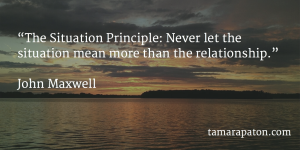

Last week, I found myself out of a job. A new owner took control of Carson-Dellosa Publishing and my five years of work there came to an end. Dollars were wired into the ether and my board CV was out of date.
This outcome wasn’t a surprise. As a private equity-backed company, a sale was always our end game. My colleagues referred to it as a “liquidity event,” a phrase that glosses over the deep relationships and learning we enjoyed. The other directors didn’t pause as we signed the sale agreement, but the weight of the moment fell hard on me. I would have done it all again, even if the work hadn’t paid me a dime.
Although I didn’t relish the company’s sale, I never resisted it. In fact, I worked hard to make it happen. Doing so isn’t always a natural instinct for many directors, however, especially when they fear losing their board seats. Job security amid M&A is a classic example of the potential conflicts of interest that face boards every day.
Fortunately, the challenge is often an obvious one and can be managed with policy and transparent communication. But what do we do in the face of less conspicuous misalignment? Under what circumstances do we need to be particularly mindful of our responsibilities as directors?
By their very nature, no two conflicts are perfectly identical. Yet, they all have the same effect on me. When I come up on a questionable situation, I feel an abrupt pause. It’s like I’m moving quickly through a familiar room and I bump into a misplaced piece of furniture.
And once I’m startled, I can’t shake off the related questions. Under perfectly virtuous circumstances, what would I do? What is right for the people I’ve committed to serve? What could this situation mean for the way I manage my time, energy and priorities?
Fortunately, I’m getting better at handling these thunks of uncertainty. And they are starting to fall into a handful of themes. Consider four contexts that often harbour subtle conflicts of interest for directors.
Nominating directors
Most boards choose their own successors, creating an opportunity to stack a board with friends. Doing so hurts the organization when personal ties trump capability. But how can we ignore the social side of a potential director’s candidacy? Should a new director fit in or stand out from the existing board?
I think the answer to this dilemma begins by separating the identification of desired characteristics from the evaluation of candidates. For example, the governance committee can identify needed skills and ask the nominations committee to find directors who fill the gaps. If we task the nominations committee with both activities, we run the risk of tilting the evaluation criteria in favour of the candidates known to committee members. I’m also a fan of recruiting non-board members to participate in the nominations process. I have worked alongside external contributors on two nominations committees that benefitted from an independent view of the best candidate for the organization.
Setting director compensation
In many organizations, directors set their own compensation, often without input or a vote from others. To maintain objectivity, a board may consult with an executive compensation consultant who uses market data to recommend appropriate director fees. But is the consultant truly objective? Perhaps they will nudge director compensation higher in hopes of securing repeat business.
When feasible, I prefer to delegate the task of recommending director fees to an arms-length committee of informed stakeholders. The consultant’s data is still a critical input, but those analyzing the data don’t benefit personally from their recommendations.
Managing director performance
Speaking candidly with a colleague about performance can be uncomfortable, but does it represent a conflict of interest? I believe it does when you consider that a colleague can open doors to future board roles. After offering feedback, it may even be difficult for a chair to build support for her agenda. It’s only human nature to approach an underperforming director with caution. This is particularly true when the director has shown a pattern of undermining the credibility of anyone who disagrees with him.
Accordingly, it can be valuable to convey feedback through a neutral party. Although hiring a consultant may feel like an indulgence, doing so eases the friction of sharing criticism directly.
Removing an underperforming director
Despite a board’s best efforts to recruit and coach directors to high performance, the problem often remains. If it’s clear that a director is having an unquestionably negative effect on boardroom culture, someone needs to call for a change. The path to removing a director is typically outlined in a board’s by-laws, but reality is always more complicated and risky than policy suggests. I have even seen a board keep a director in his role because directors feared a lawsuit.
One way to address this risk is to ensure that your directors & officers liability insurance covers lawsuits between colleagues. I am not aware of a director versus director lawsuit, but such a potential can be enough to influence behaviour. And boards can avoid escalating to that point with help from a strong chair and governance consultant.
Changing governance practices
When a board considers changes to board size, director term limits, or even its professional development budget, directors self-interest may influence the discussion. If reducing the size of the board puts your seat at risk, would you hesitate? Prevailing research and the organization’s own experience may point to a small board, but it can be hard to take action.
In these situations, I like to begin by articulating the board’s core principles that must hold true. As I described in a recent post about boards handling ethical decisions, these guardrails keep the discussion within a practical context that aligns with the organization’s needs. Beginning with the stakeholders in mind and then framing a definition of what success looks like reduces the temptation directors may feel to elevate their own needs.
Your board likely has a conflict of interest policy or code of ethics. Although very necessary, these documents are not sufficient. In my experience, directors must use their own judgment to navigate circumstances that co-mingle their personal objectives and professional responsibilities. In the moment, these issues may not be glaringly obvious, but they can hold us back from serving those we are meant to represent. Awareness and transparent communication are the first step towards resolving the tension.
Question: Under what circumstances do you feel misalignment of personal and professional responsibilities? How do you navigate the potential conflict when there are no clear rules pointing the way?
Please share your response via Twitter, LinkedIn or e-mail.
Thank you for reading! If you found this post useful, please click the “like” button on LinkedIn and/or share it with others in your network. Doing so helps my work reach others and would mean so much to me.










